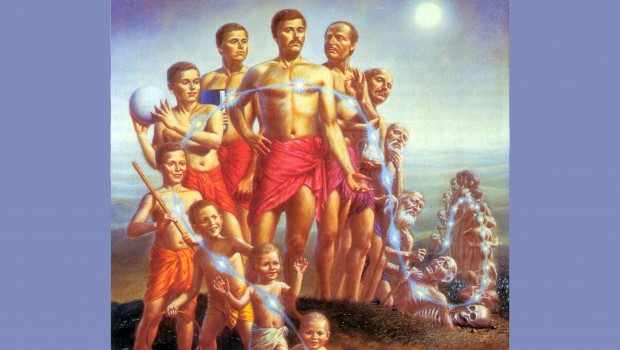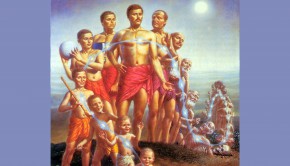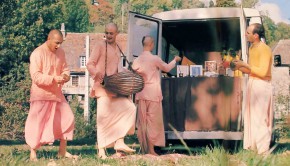Reincarnation is Real!
During past three decades, Dr. Stevenson has collected about 3000 cases that showed evidences indicating that people have remembered their past lives. Stevenson concentrates his efforts on children because their stories are far less likely to be tainted than those of adults who claim to have memories of former lives.
Children are more pure, less contaminated by experiences and exposure to things that might influence them. Many of the best cases Stevenson has examined are those of children who begin to tell of former lives between the ages of two and five. These children tell very specific tales of their former lives, often including their names, the names of relatives and the names of the towns they lived in. In each case, Dr. Stevenson methodically documents the child’s statements. Then he identifies the deceased person the child remembers being, and verifies the facts of the deceased person’s life that match the child’s memory. He even matches birthmarks and birth defects to wounds and scars on the deceased, verified by medical records. His strict methods systematically rule out all possible “normal” explanations for the child’s memories.
The case history of Sukla Gupta, a little girl from West Bengal is one of 3000 in the files of Dr.Stevenson. When Sukla was a year and half old and barely able to talk, she used to cradle a pillow and address it “Minu, Minu,” she said, was her daughter. Sukla over the next three years also recalled her previous life events, which indicated Minu to be her daughter in her previous life. Sukla was the daughter of a railway worker in Kampa, a village in West Bengal. Sukla often talked not only about her daughter, Minu but also about her husband, the father of Minu. She also talked about his younger brothers Khetu and Karuna . They all lived, she said, at Rathtala in Bhatpara. Sukla’s family, the Guptas, knew little about Bhatpar, that it was a city about 11 miles south. But, they had never heard of a place called Rathtala, nor of people Sukla had named.
Yet Sukla developed a desire to go there, and she insisted that if her parents didn’t take her she would go alone. K.N.Sen Gupta, Sukla’s father, talked about the matter with some friends. He also mentioned it to one of his railway co-workers, S.C.Pal, an assistant station master. Pal lived near Bhatpara and had two cousins there.
buy cymbalta
Through his cousins he learned that Bhatpara indeed had a district called Rathtala. He also learned of a man there named Khetu. Khetu had a sister in law named Mana who died several years before, in 1948, leaving behind an infant daughter named Minu. SenGupta decided to investigate further. With the consent of that family, he arranged for a visit to Rathtala. Sukla said that she could show the way to the house. So in 1959, when Sukla was about five, Sen Gupta and five other members of his family journeyed with her to Bhatapra.
When they arrived, Sukla took the lead. Avoiding possible wrong turns, she brought them straight to the house of Amritlal Chakravarty, her supposed father in law in her past life.
buy premarin
As the party approached, Chakravarty happened to be out on the street. When Sukla saw him, she looked down shyly, following the usual custom for a young woman in the presence of older male relative. But when Sukla went to enter the house she was confused. She didn’t seem to be at the right entrance. Her confusion however made sense. After the death of Mana (Sukla’s name in her previous life), the entrance had been moved from the main street to an ally on the side. And the party soon found that Sukla recognized not only the house, but also the people in it, including those she said were her mother in law, her brother in law, her husband and her daughter. In side house, Sukla found herself in room with some 20 to 30 people. When she was asked, can you point out your husband, she correctly indicated Chakravarty.
An Indian boy was born with a curious circular set of birthmarks on his chest. The birthmarks almost perfectly matched the drawings from an autopsy report of the shotgun wounds that ended the life of a man that was killed 15 years prior to the boys’ birth, in a village 30 kilometers away. The boy told vividly detailed stories of the man’s life, which included his name.
One girl remembers being killed after being hit by a car when she was a teenager. She says her name was Sheila in a former life. Sheila’s parents and siblings were brought to the girl, and according to witnesses, she named them all without ever having met them before.
Another fascinating case involved a five year old by named Imad who claimed that he lived a former life as a man named Ibrahim, in a village 25 kilometers from his own home in Lebanon. When Stevenson questioned Imad on little details of Ibrahim’s life and the village he lived in, the boy was correct on 51 of the 57 questions asked. Imad also correctly gave Ibrahim’s dying words, spoken some ten years before his own birth, named members of his family and constantly spoke affectionately of Ibrahim’s mistress, Jarmille.
A Thai boy was born with a skin defect on his scalp, which corresponded with the knife wound that ended the life of his uncle who the boy claimed to be reincarnated from.
buy singulair
Another Thai boy was born with a birthmark on his scalp that corresponds with the bullet wound left behind on a man whose life he claims to have remembered.
A Turkish boy is born with a deformed ear. He claims to remember the life of a man who was killed by a shotgun blast to the side of the head. The stories go on and on, but still Stevenson has his detractors. “Why do mainstream scientists refuse to accept the evidence we have for reincarnation?” Stevenson asks somewhat rhetorically but mostly with an air of complete frustration.
Past life regressions are fascinating to consider, but the real goal of understanding reincarnation is to become free from the painful cycle of birth and death. This is not a very good business–to die and take birth again. In the Srimad Bhagavatam 3.30.16–18, the great sage Kapila Muni informs his mother about the true nature of the death experience: “In that diseased condition, one’s eyes bulge due to the pressure of air from within, and his glands become congested with mucus. He has difficulty breathing, and there is a rattling sound within the throat. He dies most pathetically, in great pain and without consciousness.”
But taking birth in the material world is no picnic either. “For months the human fetus lies cramped within the darkness of the womb, suffering severely, scorched by the mother’s gastric fire, continually jolted by sudden movements, and feeling constant pressure from being contained in the small amnion, which surrounds the body in the womb. This tight, constricting pocket forces the child’s back to arch constantly like a bow. Further, the unborn child is tormented by hunger and thirst and is bitten again and again all over the body by the hungry worms in the abdomen itself, the child suffers terrible agony because of his tenderness. He thus becomes unconscious moment after moment because of the terrible condition. Owing to the mother’s eating bitter, pungent foodstuffs, or food which is too salty or too sour, the body of the child incessantly suffers pains which are almost intolerable.” — Srimad Bhagavatam 3.31.6–10
From the highest planet in the material world down to the lowest, all are places of misery wherein repeated birth and death take place. But one who attains to My abode, O son of Kunti, never takes birth again –Lord Krsna [Bhagavad-gita 8.16]














I have read the Bhagavad Gita so many many times that I must order a new copy. It has convinced me that reincarnation is a fact, not a belief. In times of trouble I have turned again and again to this wonderful book and know that it is THE WAY.
I look forward to my next life in the hope that I can somehow undo the mistakes I have made in this life. The Gita points the way. My current copy is well worn with usage.
The great German philosopher Arthur Schopenhauer said it best: “the Gita is the comfort of my life and the comfort of my death”.
You can get a new copy of Bhagavad-gita at:
https://krishnastore.com/bhagavad-gita-as-it-is-with-bonus-dvd-h-krishna-407.html
Why is in iskon they scare people by saying at the time of death what ever you think you will become that dog a dog or anything you become that
Because that is a fact, as confirmed by Krishna in the Bhagavad-gita. ‘Whatever your state of consciousness at the time of death that you will attain in the next life.’ So if you are very attached to your pet dog at the time of death and are thinking of your dear dog, that is your consciousness at the time of death, dog consciousness, so your next body will be a dog. So don’t become attached to dogs. Become attached to Krishna and remember Krishna at the time of death and go back home, back to Godhead. That is the point. Please do it.
Chant Hare Krishna and be happy!
Madhudvisa dasa
I want a guru who wil help me to know supreme Lord
Read Srila Prabhupada’s books. You will find your guru there.
I have always thought that like creatures and animals and bugs were a person who died. Is that true because it really bugs me a lot and when I die what will happen?
my ex boyfriend died december 1st my daughter just learned she is pregnant baby is due aug 27th could this be him returning….
Hare Krishna Kelly
Anything is possible but there is no way you can know and generally things don’t work like this. The analogy given in the Vedic literatures is that we are like straws floating on a river. Sometimes a bunch of straws is floating together for a while and then there is some disturbance in the river and the straws are all separated and never meet again.
So it is rather unlikely.
When my son, Seth, was three years old he suddenly turned to me and said,”Isn’t it funny mommy? I was your daddy, Buck, and now look! You’re my mommy!”
My father died when I was five years old and I didn’t give birth to Seth until I was 23 years old. My son never knew his grandfather and not only that, I have no idea how he knew my father’s nickname, Buck!